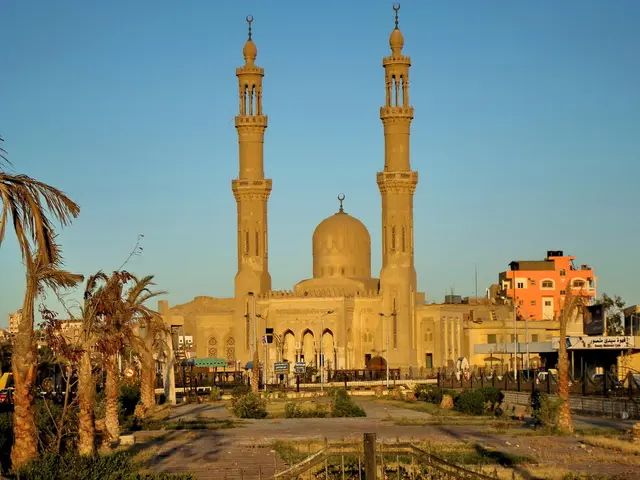Norway's Elections Result in a Red-Green Coalition Majority
Norway's recent election, held on September 11th, has seen a significant shift in political landscape. According to the Norwegian election authorities, the parties of the red-green bloc, led by the Labour Party (Ap) of incumbent Prime Minister Jonas Gahr Støre, have initially secured 88 seats in parliament, which would be a narrow majority if the Storting has 169 seats.
Støre's Labour Party is expected to be the strongest force in the election, securing 28.1% of the votes. The right-wing Progress Party, led by Siv Jensen, saw the biggest increase (plus 12.6%) and came in second with an initial 24.2% of the votes. The Conservatives (Høyre) of former Prime Minister Erna Solberg came in third with an initial 14.5% of the votes, a loss of 5.8 percentage points compared to 2021.
The formation of a new government in Norway is still in progress, and the final composition and policies are yet to be determined. However, it is clear that the election results have shown a clear preference for the red-green bloc.
Interestingly, while Norway's oil and gas production are its largest climate culprits, Støre's Labour Party does not oppose new oil and gas drilling. This could potentially create a challenge for the new government as they navigate the delicate balance between maintaining Norway's significant income from oil and gas production and addressing climate change concerns.
Three parties from the red-green spectrum in Norway's parliament do not support new oil and gas drilling. These parties are the Socialist Left Party (Sosialistisk Venstreparti), Red Party (Rødt), and the Green Party (Miljøpartiet De Grønne). All parties of the red-green bloc expressed their support for a government led by Støre during the campaign.
Norway is a significant energy supplier to Europe, and since the Ukraine war, it has become one of Europe's most important energy suppliers. The country's decision on whether to continue with new oil and gas drilling could have far-reaching implications for Europe's energy security.
It's important to note that a minority government, where a party or coalition does not need a parliamentary majority but must not have a majority in the parliament voting against them, is not uncommon in Norway. The formation of such a government would require the support of smaller parties, and in this case, it could potentially lead to a more balanced approach towards energy production and climate change.
Around four million Norwegians voted in the recent election. With the election results now clear, the focus will shift towards the formation of a new government and the policies it will pursue. The final composition and policies of the new government will play a crucial role in shaping Norway's future, particularly in terms of its energy production and climate change policies.
In conclusion, the recent election in Norway has shown a clear preference for the red-green bloc, led by Prime Minister Jonas Gahr Støre. However, the question of whether Norway will continue with new oil and gas drilling remains unanswered, and this decision could have significant implications for Norway and Europe. The formation of a new government and the policies it will pursue are still in progress, and the final outcome will be keenly watched by both Norwegians and the international community.
Read also:
- ICE directed to enhance detention conditions following NYC immigrants' allegations of maltreatment
- Israeli finance minister issues warnings about potential annexation of West Bank territories
- United States faces rebuttal from South Africa over allegedly deceitful human rights report and assertions of land expropriation
- Accident at Rodalben Results in Injuries; Geoskop Area near Kusel Affected After Stormy Weather







